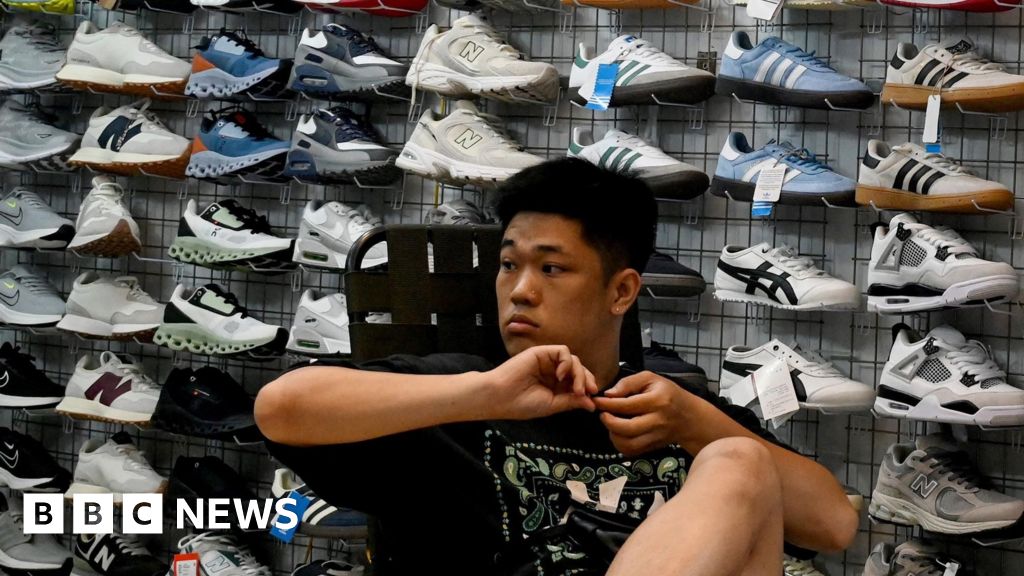
In a world where global supply chains are intricately woven across continents, the unpredictability of U.S. tariff policies under President Donald Trump is sending ripples through Asian businesses. As the 90-day pause on the steep “Liberation Day” tariffs approaches its end on July 9, companies and countries alike are scrambling to adjust to the looming changes.
Tan Yew Kong, who oversees operations at GlobalFoundries in Singapore, likens his company to a tailor shop, customizing semiconductor chips to meet specific client needs. “We provide the fabric, we provide the cufflinks and everything. You tell us what you like, what design you like and we make it for you,” Tan explains. However, the company now finds itself tailoring its future to accommodate the unpredictable tariff policies emanating from Washington.
Tariff Turmoil and Business Strategy
The announcement of impending letters detailing higher tariff rates, ranging from 10% to 70%, has left businesses in a state of uncertainty. While semiconductors currently remain exempt, the threat of tariffs looms large, complicating long-term planning for companies like GlobalFoundries, which has a significant footprint across Asia.
According to Bloomberg, the White House is considering tightening controls over AI chips, restricting shipments to Malaysia and Thailand to prevent suspected smuggling to China. The U.S. Commerce Department has yet to comment on these reports.
“You cannot flip the switch every other alternate week or day. That makes it very difficult for businesses to plan long term,” said Tan Yew Kong.
GlobalFoundries, which collaborates with major semiconductor designers like AMD, Broadcom, and Qualcomm, recently announced plans to increase its investments to $16 billion in response to the rising demand for AI hardware. To safeguard its operations, the company has pledged to collaborate with the Trump administration to relocate parts of its manufacturing and supply chain to U.S. soil.
Winners and Losers in Asia’s Economic Landscape
When the tariffs were first announced in April, Asian economies such as Japan, South Korea, and Vietnam faced some of the steepest rates. Although a temporary reduction to 10% was implemented, the possibility of higher rates returning remains a concern.
Malaysia’s Prime Minister has voiced concerns about the adverse effects on industries like textiles, furniture, and rubber. Despite a free trade agreement with the U.S., Singapore faces a 10% levy, prompting its Prime Minister to remark that these are “not actions one does to a friend.”
South East Asian countries accounted for 7.2% of global GDP in 2024. The extra costs that come with tariffs could have severe, long-lasting effects.
Vietnam has managed to secure a deal, with U.S. imports facing a 20% tariff, while exports to Hanoi remain levy-free. Meanwhile, Japan and South Korea continue negotiations, though Trump has threatened even higher rates for Tokyo, potentially reaching 35%.
Impact on Regional Economies
Asian economies, heavily reliant on both China and the U.S., find themselves at the heart of the global supply chain. According to Pushan Dutt, a professor at INSEAD, shifts in trading patterns could pose significant challenges. Countries with substantial domestic demand, like India, may be insulated, but export-reliant economies such as Singapore, Vietnam, and China could face major impacts.
A New World Order in Trade
In response to Trump’s election, countries like Singapore and Malaysia invested in growth industries, including chip manufacturing and data centers, partly to align with the U.S. through “friend-shoring.” The “China + 1” strategy further diversified supply chains beyond China and Taiwan to South East Asia, ensuring continued access to the critical U.S. market.
Aparna Bharadwaj of Boston Consulting Group notes that despite tariff challenges, the U.S. remains an essential market for many Asian businesses due to its status as the world’s largest economy with a dynamic consumer base.
“No matter what happens with tariffs, the U.S. remains an important customer for many Asian businesses,” Bharadwaj emphasizes.
As the deadline for the tariff pause approaches, Asian businesses brace for potential changes that could reshape their operations and strategies. The coming weeks will be crucial in determining how these economies navigate the evolving trade landscape and adapt to the new realities of global commerce.







